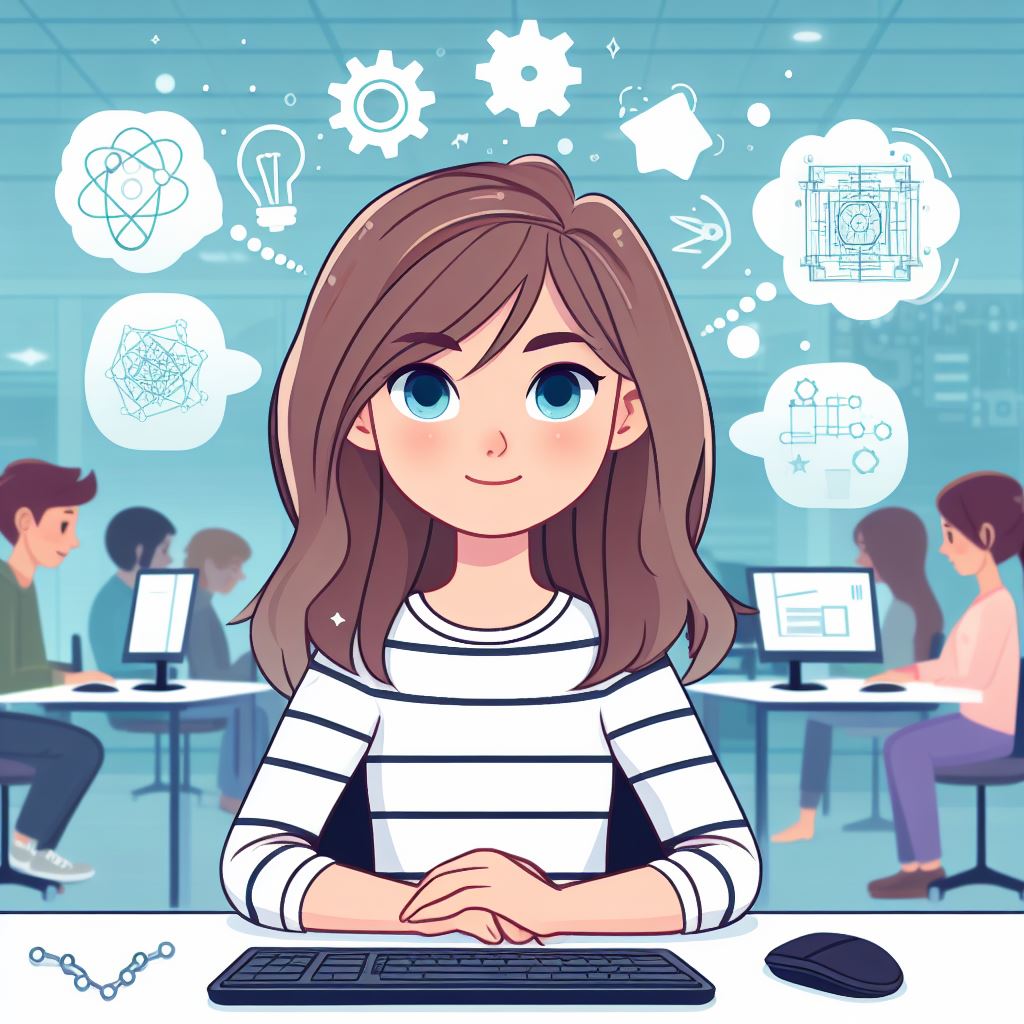Introduction
Game development with Scratch is a fun and interactive way for kids to create their own games.
Teaching kids game development skills is important as it enhances their problem-solving and creative thinking abilities.
Scratch offers excitement and engagement to kids through its user-friendly interface and interactive features.
Unlocking Creativity: Game Development with Scratch for Kids
- Game Development with Scratch Defined: Scratch, a visual programming language, introduces kids to the world of game creation.
- Teaching Kids Essential Skills: Game development imparts problem-solving, logic, and computational thinking skills crucial for their future.
- Importance of Early Exposure: Introducing coding early sparks interest, preparing kids for a tech-driven future with confidence.
- Excitement through Creativity: Scratch’s user-friendly interface allows kids to turn imaginative ideas into interactive games effortlessly.
- Engagement and Fun Learning: Interactive projects keep kids hooked, fostering a passion for technology while they learn to code.
- Building a Foundation for STEM: Game development lays the foundation for Science, Technology, Engineering, and Math concepts in an enjoyable manner.
- Fostering Collaboration: Scratch encourages collaboration as kids share and remix each other’s projects, fostering a sense of community.
In general, game development with Scratch is more than coding; it’s a gateway to creativity, learning, and a lifelong love for technology.
Understanding Scratch and Game Development
Overview of Scratch
- Scratch is a visual programming language that allows kids to create their own interactive games.
- Scratch was developed by the Lifelong Kindergarten group at the MIT Media Lab in 2003.
- It was created with the purpose of teaching kids the fundamentals of coding in a fun and engaging way.
- The basic features of Scratch include a drag-and-drop interface, sprite creation, and event-driven programming.
Introduction to Game Development with Scratch
- Scratch is ideal for teaching game development to kids because of its simplicity and visual nature.
- Using Scratch, kids can learn important programming concepts such as loops, conditionals, and variables.
- One of the main benefits of using Scratch is its accessibility, as it is free and available online.
- With Scratch, kids can create a wide variety of games, including platformers, puzzles, and interactive stories.
- They can also customize their games by adding sound effects, animations, and backgrounds.
- Scratch provides a supportive online community, where users can share their projects and get feedback.
- The platform also offers resources like tutorials and sample projects to help kids get started.
- By using Scratch, kids can not only develop their coding skills but also enhance their creativity and problem-solving abilities.
Overall, Scratch provides a user-friendly and engaging platform for kids to learn game development.
Its visual programming interface and wide range of features make it an ideal choice for beginners.
With Scratch, kids can unleash their imagination, create their own games, and share their creations with others.
Whether they dream of becoming game designers or simply want to have fun while learning, Scratch empowers kids to explore the magic of game development.
Read: Exploring Python’s Lambda Functions & Use Cases
The Magic of Game Development with Scratch for Kids
Game development with Scratch provides a magical opportunity for kids to explore and learn various skills while having fun.
In this section, we will delve into the marvels of game development using Scratch for children.
Encouraging Creativity and Imagination
Scratch offers a unique platform for kids to unleash their creativity and imagination by creating their own games.
With its drag-and-drop interface, kids can design characters, backgrounds, and interactive elements, bringing their ideas to life.
To showcase the creative potential of Scratch, we will present case studies and examples of games developed by kids.
Tech Consulting Tailored to Your Coding Journey
Get expert guidance in coding with a personalized consultation. Receive unique, actionable insights delivered in 1-3 business days.
Get StartedThese games demonstrate the limitless possibilities and innovative solutions kids can create using Scratch’s tools and features.
Furthermore, storytelling and narrative play a significant role in Scratch game development.
By integrating narratives into their games, kids not only engage players but also enhance their storytelling skills and imagination.
Developing Logical and Problem-Solving Skills
Game development challenges kids to think critically and logically. As they design games, they encounter problems and obstacles that require strategic thinking and problem-solving skills.
By overcoming these challenges, kids develop a logical mindset and analytical abilities.
Scratch allows for incorporating problem-solving elements in games. Kids can create puzzles, quests, and challenges, encouraging players to find solutions and develop problem-solving skills.
This process enhances their logical thinking and decision-making capabilities.
Moreover, game development activities using Scratch enhance computational thinking.
The process of designing games in Scratch requires breaking down complex problems into smaller, more manageable components.
This computational thinking approach helps kids develop analytical skills and algorithmic thinking.
Fostering Collaboration and Teamwork
Scratch provides opportunities for kids to collaborate on game projects, fostering teamwork and collaboration.
Working together, children can divide tasks, share ideas, and combine their skills to create more elaborate games.
The benefits of teamwork in game development using Scratch are numerous. By collaborating, kids learn from each other’s strengths, perspectives, and problem-solving approaches.
They also gain valuable experience in communication, compromise, and the value of collective effort.
Build Your Vision, Perfectly Tailored
Get a custom-built website or application that matches your vision and needs. Stand out from the crowd with a solution designed just for you—professional, scalable, and seamless.
Get StartedFurthermore, the Scratch community offers a platform for sharing and learning from each other’s projects. Kids can showcase their games, receive feedback, and explore others’ creations.
This collaborative environment not only enhances their skills but also inspires them to continue experimenting and learning.
In essence, game development with Scratch is not just about creating games. It is a magical journey that nurtures children’s creativity, imagination, logical thinking, problem-solving abilities, and collaborative skills.
Through Scratch, kids can become the architects of their own digital worlds, acquiring valuable skills that will benefit them both inside and outside the world of game development.
Read: Understanding Python Syntax: A Beginner’s Guide
Uncover the Details: Applying to Free Coding Bootcamps: A Step-by-Step Guide
Resources and Tools for Game Development with Scratch
When it comes to game development with Scratch, having access to the right resources and tools can make a significant difference in the learning process.
From learning materials and tutorials to Scratch extensions and add-ons, there are various options available for aspiring game developers of all skill levels.
Learning Materials and Tutorials
1. Recommended books, websites, and courses for learning Scratch
There are numerous learning materials available that can help kids get started with Scratch game development.
Books like “Super Scratch Programming Adventure!” by The LEAD Project and “Coding Games in Scratch” by Jon Woodcock provide step-by-step instructions and engaging projects.
Websites like Code.org and the official Scratch website also offer tutorials, projects, and interactive lessons. Additionally, online courses like those offered by Udemy and Coursera can further enhance learning.
2. Interactive tutorials and projects for beginners in Scratch game development
For beginners, interactive tutorials and projects are essential resources to understand the basics of Scratch.
These tutorials often introduce concepts like creating sprites, using blocks, and designing backgrounds through step-by-step instructions.
Websites like ScratchEd and ScratchJr provide a range of beginner-friendly resources to ignite creativity and help kids start building their first games.
Optimize Your Profile, Get Noticed
Make your resume and LinkedIn stand out to employers with a profile that highlights your technical skills and project experience. Elevate your career with a polished and professional presence.
Get Noticed3. Advanced resources for expanding skills and knowledge
Once the basics are mastered, it’s important to have access to more advanced resources to further develop skills and knowledge.
Advanced Scratch programming books like “Scratch Programming Playground” by Al Sweigart and “Coding Projects in Scratch” by DK Publishing can challenge kids to create more complex games with advanced programming concepts.
Other resources like online forums, coding clubs, and competitions can provide opportunities for collaboration, feedback, and growth.
Scratch Extensions and Add-Ons
1. Overview of additional features and extensions available in Scratch
In addition to the built-in features of Scratch, there are various extensions and add-ons that can be used to enhance game development experiences.
These extensions can introduce new functionalities, such as sound effects, multiplayer capabilities, and custom blocks.
Examples of popular extensions include Music Extensions, Pen Extensions, and Text-to-Speech Extensions.
2. How to leverage extensions to enhance game development experiences
By utilizing Scratch extensions, game developers can take their projects to the next level. Extensions allow for more creativity and customization in game designs.
For example, the Music Extension enables the addition of background music or interactive sound effects, while the Pen Extension allows for drawing and creating unique visual elements.
Exploring and experimenting with different extensions is a great way to expand possibilities and create more engaging games.
3. Sharing community-made extensions and their applications in games
The Scratch community is full of talented individuals who create and share their own extensions.
These community-made extensions can add exciting features to games, such as new game mechanics, visual effects, or even custom characters.
Exploring the Scratch community forums and projects can help game developers discover new extensions and learn how to integrate them into their own games.
In fact, having access to a variety of resources and tools is crucial for successful game development with Scratch.
Learning materials, tutorials, and advanced resources provide a structured learning path for beginners and help them progress to more advanced game development.
Scratch extensions and add-ons offer endless possibilities for creativity and customization.
The Scratch community, with its wealth of community-made extensions, provides inspiration and opportunities for collaboration.
When armed with these resources, kids can truly unlock the magic of game development with Scratch.
Read: Virtual Environments in Python: Isolate Your Projects

Success Stories and Inspiration
Showcasing Successful Scratch Game Projects
Game development is a field that offers immense possibilities and opportunities for young minds.
One of the best ways to inspire kids to explore this exciting world is by showcasing successful game projects developed using Scratch.
Scratch, a visual programming language and online community developed by MIT, has become a platform where kids can unleash their creativity and develop their own games.
Many of these games have gained popularity and even received recognition outside of the Scratch community.
By highlighting popular and successful games developed by kids, we can not only give credit to their incredible achievements but also inspire others to follow in their footsteps.
These games serve as examples of what is possible through dedication, creativity, and perseverance.
The impact and creativity behind these games are worth analyzing.
The inventive gameplay, stunning graphics, and innovative mechanics implemented by these young developers demonstrate that age is not a barrier to creativity.
By studying their games, kids can learn new techniques, get inspired, and improve their own skills.
Inspiring Kids to Pursue Game Development Careers
Another powerful way to inspire kids is by interviewing young game developers and sharing their journey with Scratch.
Through these interviews, we can learn about the challenges they faced, the skills they acquired, and the lessons they learned along the way.
Their stories can serve as a source of inspiration and guidance for aspiring game developers.
Showcasing these success stories not only motivates kids to explore game development but also encourages them to consider pursuing a career in the industry.
By introducing them to different career paths, such as game programming, game design, or game art, we can help them discover their interests and align them with future opportunities.
Early exposure to game development is crucial for kids who are passionate about creating games.
By starting with Scratch, they can learn the fundamental concepts of programming and game design in a fun and interactive way.
This early exposure lays a solid foundation and sets them on a path to success in the future.
In addition, sharing stories of successful game developers who started their journey with Scratch can provide inspiration and prove that dreams can come true.
These stories demonstrate that with passion, persistence, and the right tools, anyone can turn their hobby into a successful career.
Overall, showcasing successful Scratch game projects and sharing inspiring stories is a powerful way to ignite the passion for game development in kids.
By demonstrating the impact, creativity, and career possibilities, we can motivate and support the next generation of game developers on their exciting journey.
Read: Deploying Python Apps: Heroku, Docker & More
Conclusion
The magic of game development with Scratch for kids is truly remarkable.
Throughout this blog chapter, we have explored the wonders of creating interactive games using the Scratch platform.
We have seen how Scratch allows children to express their creativity and problem-solving skills in a fun and engaging way.
By designing their own games, kids can learn important concepts such as logic, sequencing, and computational thinking.
Moreover, Scratch offers a supportive and collaborative community where kids can share and showcase their creations.
Encouraging children to get started with Scratch game development can open a whole new world of opportunities for them.
By fostering their interest in coding and game design, we can empower kids to become creators of technology rather than passive consumers.
Parents and educators play a crucial role in supporting children on this creative journey.
They can provide access to resources, mentorship, and encouragement throughout the learning process.
So, let’s inspire our kids to dive into the magical world of Scratch game development and unleash their limitless imagination.
Together, we can fuel their passion, boost their confidence, and pave the way for a bright future filled with endless possibilities.




